Guest contributor Isabel Conway recently took a trip to Lanzarote so let’s check out how she got on.
There are few better escapes from COVID woes than letting loose among Lanzarote’s weird and wonderful lunar-like landscape warmed by balmy winter sunshine and wowed by the contrasting golden sandy beaches of the south. Little wonder that the sunniest and strangest island of the far-flung archipelago of volcanic islands, that rose out of the sea to create Las Canaries over millions of years, has traditionally been the most popular Canary Island for Irish holidaymakers.
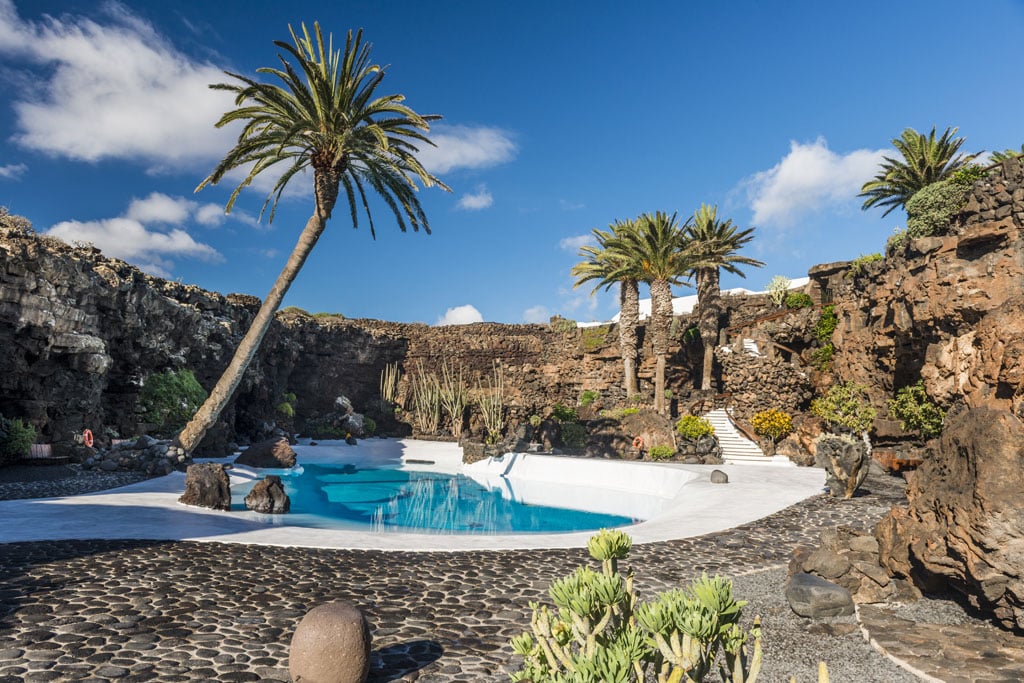
We arrived towards the end of 2021, as Lanzarote was announcing the island’s return to pandemic alert level 2 due to a surge in Omicron infections. New restrictions included the closure of late night clubs, losing a couple of hours from usual dawn closure and cafes and bars following suit.
But a glance around me – every seat on the Aer Lingus flight outward and also inward six days later was taken – whose passengers are predominantly seniors, some of the truly advanced years, and young families re-assures me that hardcore night owls are probably thin on the ground right now.
Arriving in Lanazarote
Lanzarote, like neighbouring islands, has had plenty of time to make the ‘new normal’ for visitors run smoothly. Apart from mask-wearing, social distancing and fewer tables on terraces there was little or no change in the visitor experience.
Thrilled to be back on our favourite Canary island, we returned to our favourite seafood restaurants along the coast, El Golfo and Calas de Papagayo. Playa Quemada and more remote coves and views, discovering new tapas restaurants on balmy evenings off seaside promenades in front of the sprawling capital town of Arrecife. Our Fiat 500, a fire engine red little rental car gallantly ascended some punishing gradients, zipping over excellent highways, whilst we discovered the legacy of the late Cesar Manrique, architect, artist and visionary.
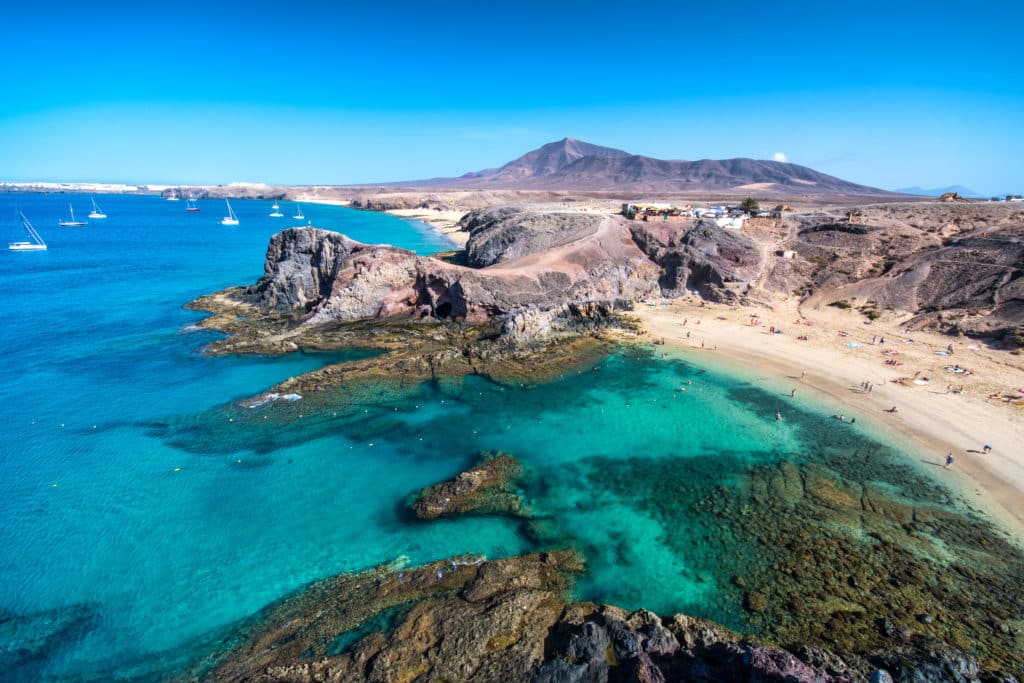
Before his time a committed environmentalist Manrique is credited with saving Lanzarote from the ravages of rampant development. Instead, he would create a series of tourist attractions, geological artworks in their own right out of the island’s dramatic volcanic terrain.
The pretty whitewashed village Haría tucked away in the heart of northern Lanzarote, is reached via a winding narrow road that offers spectacular views of the coast and arid black sanded horizon, a fitting entry to his world here.
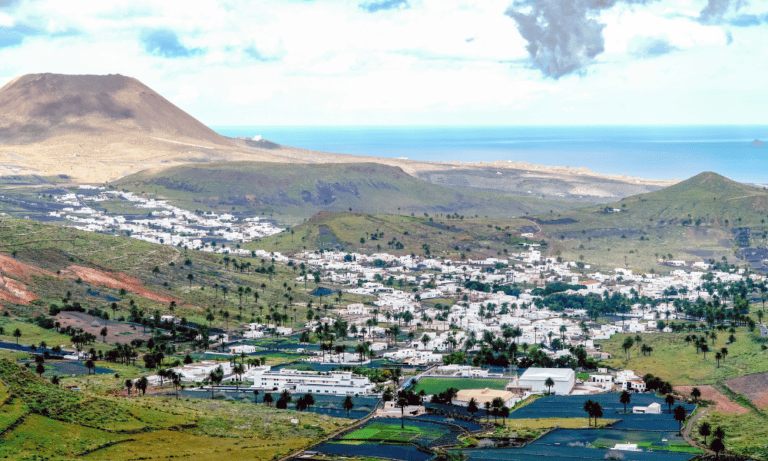
After a brief period in the mid-1960s as the toast of Bohemian New York, collaborating with Andy Warhol, partying among the city’s avant-garde, Manrique returned to Lanzarote which he described as “an unframed, unmounted work of art”, many years later he recalled, “I hung it up for all to see”.
Today the architect’s home, built into boulders in a lava field on the outskirts of the village of Haria, is a foundation dedicated to his life and work. Built-in 1968 on the lunar landscape of Tahíche, near the centre of the island, the house and grounds are a futuristic maze of interconnecting basalt tunnels, five of its rooms actually natural volcanic bubbles decorated by the artist.
With a fig tree growing up through the floor of the living room, jewel-like water pools, Ibiza-style chill-out niches ringed by leather seating and even a small dance floor, here is the ultimate party house where Manrique threw legendary parties of his own.
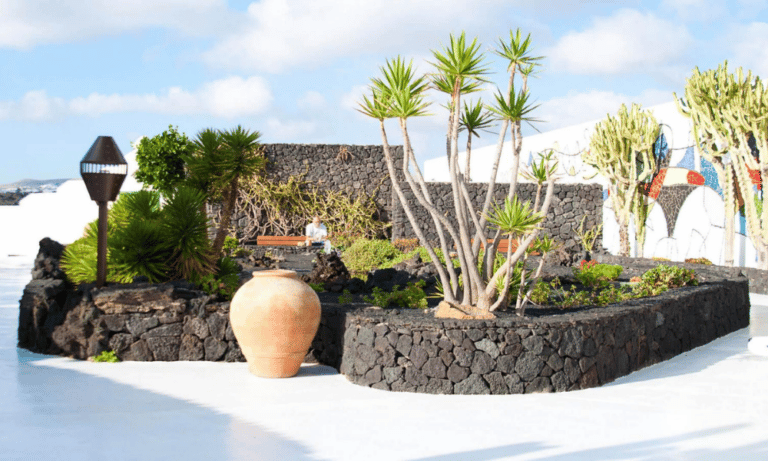
The ground floor is an exhibition space with works by his contemporaries, including Tàpies, Millares, Picasso and Saura. Windows at odd angles draw the eye whilst steps lead down to a turquoise pool and five lava bubbles linked by passages in the volcanic rock.
A visit to the Cesar Manrique House Museum is a must-do on Lanzarote to get a good idea of what he was all about, also explaining his vision and other creations on the island. The Cesar Manrique complex in Haria presents his studio workshop looking like he had just stepped out and might return at any moment to finish a canvas, surrounded by pigments, drawings, easels and unusual objects that inspired him.
Tragically, the party was over far too soon for Manrique. After a meeting with his Foundation’s trustees on a sunny Friday in September 1992, he took the wheel of his beloved green Jaguar and minutes later was involved in a fatal collision with a four-by-four on one of the island’s twisting narrow roads.
A wind toy known as Fobos, built to his design, was erected at the roundabout near the crash scene. A rotating collection of orbs and discs it spins like a map of the solar system and is currently being restored, due to be returned in time for Manrique’s centenary year to honour Lanzarote’s superstar.
Caesar Manrique’s influence is found everywhere, from a beautiful café on Playa Blanca’s coastal shopping strip to sugar cube villages scattered among the stark black sand landscape. Yes, there’s obviously been some relaxation of building regulations on the coast where half-built skeletal apartment buildings on the northern strip of Costa Teguise are an ugly blot on the horizon. Manrique would shudder too at the garish fast-food arcades and shopping malls that line main tourist resorts seafronts.
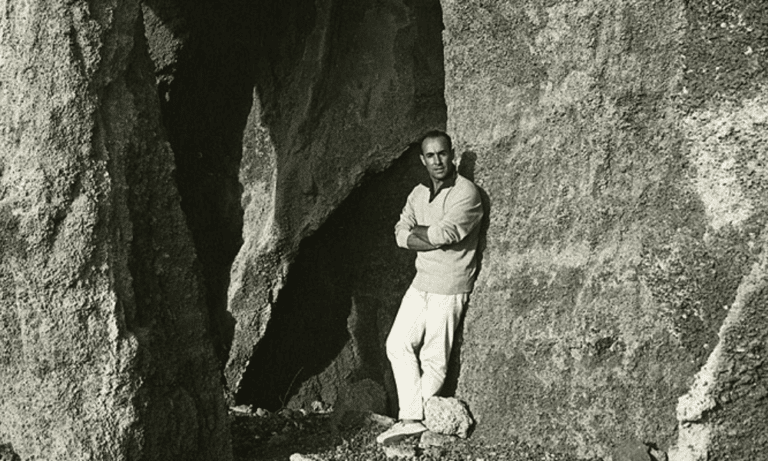
After viewing his famous Jardin de Cactus and outdoor installations, including Juguete del Viento (Wind Toy) tributes to the windmills of the artist’s childhood, we drove into the La Geria region, passing coal-black lava fields that nurture the distinctive Malvasia grapes to produce excellent flinty dry and also semi-sweet wines, ready for tasting and to purchase in a string of wine grower bodegas.
Around 360 volcano cones rise up from the granular black sand of Parque Nacional de Timanfaya, a massive volcanic wasteland of mangled rock and twisted lava created by eruptions between 1730 and 1736. The focal point of the vast black landscape is the Islote de Hilario volcano. Due to the fragile nature of the rocks, you can’t walk around unaccompanied.
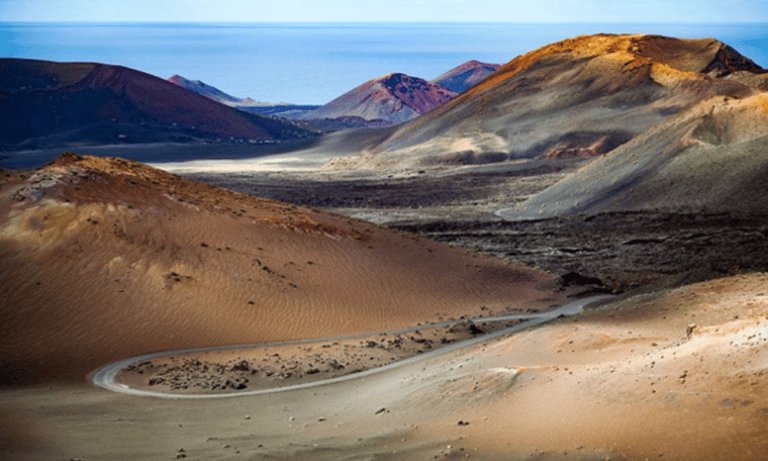
Buses (entrance fee €12) take you around the park to see the spooky striated rock formations, the results of massive volcanic eruptions that blasted the island in the 1730s. That catastrophe left over a quarter of the landmass freakishly contorted and encrusted in lava. It is a visit that brings stark realisation, as a result of months of volcanic eruptions on the island of La Palma about 150 km away, of the devastation that was experienced.
The towering 5-star Gran Hotel Arrecife, where we stay, has become a more recent island landmark (from €181 per night for doubles with breakfast).
Built before the ban on high rise structures was introduced on the island, the 5-star glass tower ‘skyscraper’ is a handy marker, visible for miles around. The 17th floor is as much a tourist attraction as a smart venue for cocktails and dining.
A rental car is absolutely essential on Lanzarote because public transport is limited and some of the most iconic parts of the island can only be visited privately or on tours. Local car hire specialists CICAR or Cabrera Medina offer seven days’ hire for around €102.00. For more information on stays in Lanzarote and the latest COVID regulations on trips to the islands see www.turismolazarote.com and www.spain.info.


